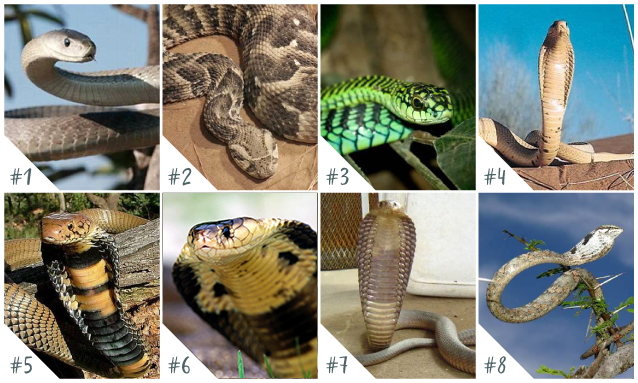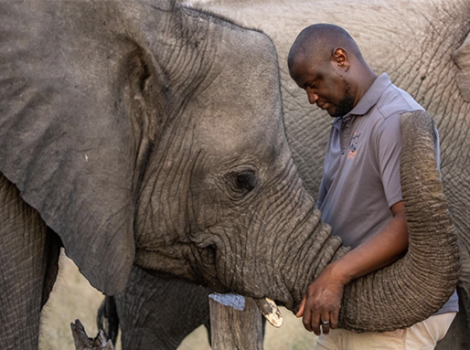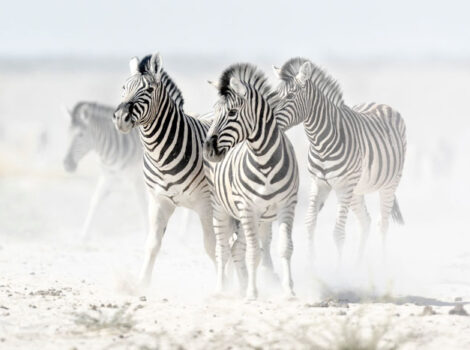If you’re heading for Botswana it’s worth knowing that it is full of creepy crawlies of various types, among them 72 snake species. Small comfort; about 80% of those are not venomous.
This week the Botswana government shared a list of Botswana’s eight most venomous snakes. YourBotswana thought it would be great to share them with you all in case you ever come across one.
The following is a list of what are considered to be the eight most potentially dangerous venomous snakes found in Botswana. If you see one, you’ll need to stay well clear of them.

1. Black Mamba (Dendoaspis Polylepis) the largest and fastest venomous snake in Africa, the black mamba can strike up to 12 times in quick succession, delivering enough neuro and cardio-toxic venom to kill within an hour. The toxin starts to take effect within minutes and can cause paralysis, vomiting and loss of consciousness. They have been known to take down lions and other large predators when defending their territory.
2. Puff Adder (Bitis Arietans) is responsible for the most human fatalities in Africa. It has large fangs and releases a cytotoxic venom, which attacks the body cells or tissues causing major inflammation and extreme pain. If untreated, death can result within a day.
3. Boomslang (Dispholidus Typus) is a shy but lethal predator. Its venom is haemotoxic, meaning that it affects the body’s natural blood clotting mechanism, resulting in the bleeding of the internal organs. What complicates matters is that the venom is often slow-acting, which makes victims underestimate the seriousness of the bite. Symptoms can take up to 24hrs to show, with victims bleeding to death from every orifice.
4. Cape Cobra (Naja Nivea) is notoriously aggressive. Its venom is made up of potent postsynaptic neurotoxins that affect the respiratory system, nervous system, and the heart. Death takes anywhere from one to ten hours (or more), often as a result of respiratory failure due to the onset of paralysis.
5. Mozambican Spitting Cobra (Naja Mossambica) can elevate as much as two-thirds of its total body length. As the name suggests, the snake “spits” its neurotoxic venom up to 3 metres away with pinpoint accuracy. If it manages to hit you in the eye, it can lead to permanent blindness.
6. Snouted Cobra (Naja Annulifera) is another highly venomous snake. Its bite can lead to respiratory complications; and if left untreated, may cause respiratory failure and death. Initial symptoms include pain and local swelling that may result in blistering. Typically, victims are bitten on the lower leg, usually at night.
7. Anchieta’s Cobra (Naja Anchietae) whose venom is primarily a potent neurotoxin. As a species of moderate size with relatively large fangs, it can inject considerably large volumes of venom in a single bite. Although rare, bites have been known to lead to death in humans.
8. Twig snake (Thelotornis Capensis) is among the few rear-fanged snakes whose bite is highly venomous and potentially fatal. The venom is hemotoxic. While its effects are slow and bites are rare, some fatalities have occurred.
What to do if you come across a snake
Do not pick it up, poke or provoke it, even if it seems dead because some snakes are known to play dead, and can strike if disturbed.
Do not get too close to a snake; instead stay well clear. If you accidentally step on one, try to move away from it as fast as is possible in your terrified, panic- stricken state.
If it’s distance away; freeze for a moment and gauge the snake’s reaction. What’s likely to happen is that it may try to escape. If it’s cornered, try to slowly back away from it. If you move slowly you are not perceived as a threat and the snake is less likely to strike.
Watch it closely –If the snake keeps slithering on the ground, it will likely move away and not strike. If it rears up like a cobra and flattens its neck to form a hood, then it is aggressive and is likely to strike, meaning you need to proceed with caution. Some snakes move in a straight line, while others move using side-to-side undulations.
What to do if you’re bitten
Try to remain calm. Do not panic or rush, as this speeds up your metabolism and spreads the poison faster. More damage is done by the shock than the actual bite. Identify the snake if possible. If you do not know what snake it is try and memorise what it looks like.
Relax and call for medical help.
If you are bitten by a cytotoxic snake such as an adder:
- Drink plenty of fluid unless you have trouble swallowing
- Apply a sterile dressing to the wound
- Never try to suck the venom out with your mouth
- Do not squeeze the bite
- Do not apply a tight bandage or tourniquet
If you are bitten by a neurotoxic snake such as a cobra or mamba:
- Try to stay calm and breathe gently
- Immediately apply a crepe bandage firmly around the wound, as if for a muscle sprain. This will reduce the amount of venom entering the bloodstream but should not cut off circulation
- Do not apply a tourniquet
- Never try and suck the venom out
If in the company of someone who gets bitten, rush them to a medical facility as soon as possible, as these snakes have potent venom and anti-venom will be needed.
Did you enjoy this article? Please share it or share your thoughts with YourBotswana.
Source: Botswana Government & nature-reserve.co.za




I thought the Mozambique spitting cobra’s venom is cytotoxic. Please check the info published on the page.
Thank you so much for the article I have respect for snakes I’ve been to Botswana often and my granddaughters tell me to walk around with a stick and stamp the floor in front as we go for walks on the plot. Last week they caught and relocate a rare python of 3 meters… poff haders those are dangerous venomous and they are abundant in Maun.. whatch out for this sly snake. Greetings from SA.
You should be a part of a competition for one of the most useful blogs online. I will recommend this website!
Really learned a lot from this aticle.
I like what you are doing guys may you help me I am opening a snake park in letlhakane
Good information. It might help to add facts about where these snakes are most likely to be encountered, unless they are ubiquitous!
Me too
Wow, superb blog layout! How long have you been blogging for? you make blogging look easy. The overall look of your site is wonderful, let alone the content!